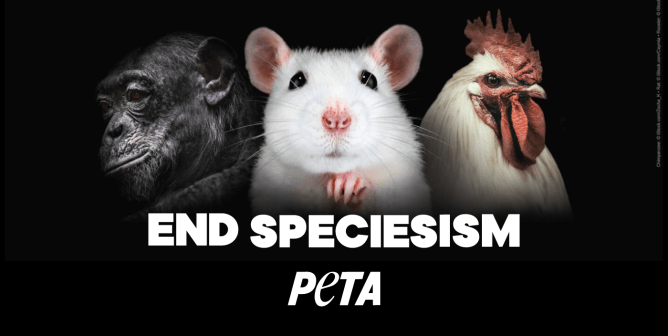Endocrine Disruptor Screening Program: History and Timeline
1996
The U.S. Congress enacted the Food Quality Protection Act, which required that the Environmental Protection Agency (EPA) “develop a screening program, using appropriate validated test systems and other scientifically relevant information, to determine whether certain substances may have an effect in humans that is similar to an effect produced by a naturally occurring estrogen, or such other endocrine effect as the … [agency] may designate.”
The EPA established an Endocrine Disruptor Screening and Testing Advisory Committee (EDSTAC) to “provide advice and counsel to the Agency on a strategy to screen and test endocrine disrupting chemicals and pesticides in humans, fish, and wildlife.”
1998
On EDSTAC’s advice, the EPA significantly expanded the scope of its Endocrine Disruptor Screening Program (EDSP) to examine effects on androgen and thyroid hormones as well as estrogen-like effects. The program included toxicity testing on birds, fish, amphibians, invertebrates, and mammals.
2000
The U.S. National Toxicology Program’s former Advisory Committee on Alternative Toxicological Methods made a unanimous recommendation that all proposed test methods for the EPA’s endocrine program should be robustly validated, including traditional animal test methods.
2001
The EPA established the Endocrine Disruptor Methods Validation Subcommittee (EDMVS). The EDMVS provided the EPA with technical advice and counsel on scientific issues associated with test method validation, including the development and choice of initial protocols and validation study designs.
2002
The Organisation for Economic Co-operation and Development’s (OECD) Task Force on Endocrine Disrupters Testing and Assessment (EDTA) revised its conceptual framework for the testing and assessment of chemicals for potential endocrine disrupting effects to put greater emphasis on non-animal screening and testing approaches. The EDTA also endorsed the formation of a Validation Management Group to focus on the development and validation of non-animal screening and testing methods.
2003
The EPA published its proposed approach for selecting the first group of chemicals to be screened under its EDSP.
2004
The EPA announced its intent to form a full advisory committee––the Endocrine Disruptor Methods Validation Advisory Committee (EDMVAC)—to replace the EDMVS. The EDMVAC was charged with continuing to provide the EPA with advice and recommendations on scientific and technical aspects of the tests being considered for the EDSP.
2007
The EPA published a draft list of the first chemicals for screening (List 1). PETA submitted comments identifying existing data for most chemicals on the draft list and voiced concerns about insufficient measures to prevent duplicative testing as outlined in draft policies and procedures for the EDSP.
The National Academies’ National Research Council released its report, Toxicity Testing in the 21st Century: A Vision and a Strategy, which called for a collaborative effort across the toxicology community to rely less on animal tests and more on in vitro tests using human cells and cellular components to identify chemicals with toxic effects.
2008
The Federal Insecticide, Fungicide, and Rodenticide Act Scientific Advisory Panel (FIFRA SAP) reviewed the Tier 1 battery of EDSP tests, and PETA submitted comments detailing the scientific flaws of the tests. Despite critical reviews from several stakeholders and the panel itself, the EPA decided to continue using the Tier 1 battery as is to test List 1 chemicals.
2009
PETA and others met with the EPA to discuss concerns about restructuring the Tier 1 battery to include more current non-animal methods as well as non-testing methods and other scientifically relevant information.
PETA financially supported a workshop through the OECD to review a computer model for estrogen receptor binding for regulatory acceptance. The workshop helped lead to the acceptance of this method by the OECD as well as the EPA, following a FIFRA SAP review of the method in the fall of 2009.
The EPA published about several elements of the EDSP, describing initial screening and testing of List 1 chemicals, including the following:
- The final list of initial pesticide active ingredients and pesticide inert ingredients to be screened under the Federal Food, Drug, and Cosmetic Act, which included 67 chemicals to be screened under Tier 1 of the program
- Revised policies and procedures for the EDSP that the EPA adopted, including the statutory requirements for and the format of the test orders as well as the EPA’s procedures for fair and equitable sharing of test costs and data confidentiality
- The EDSP Tier 1 battery of tests and availability of test guidelines (protocols) for conducting the tests included in the battery
- The first EDSP test orders
To avoid unnecessary costs and duplicate tests, the Office of Management and Budget (OMB) sent a letter to the EPA mandating that it encourage test order recipients to submit existing chemical data to the EPA in lieu of performing all or some of the Tier 1 tests and that the EPA should accept these data as sufficient to satisfy the test orders to the greatest extent possible. PETA responded to this mandate by sending a letter of agreement to the OMB.
The OECD approved the first non-animal test for endocrine disruption: Japan’s estrogen receptor transcriptional activation test. This test became one of the required Tier 1 tests.
2010
PETA submitted comments to the EPA using existing data to address the test orders for 12 of the List 1 chemicals.
The EPA published its second list (List 2) of 134 chemicals that would eventually be tested using the Tier 1 tests. PETA submitted extensive comments that included existing data on 17 of the List 2 chemicals that provide a basis for exemption from EDSP testing.
2011
Due to the design of the program, it was possible that the same tests on the same chemicals would be performed multiple times because each chemical may have more than one manufacturer. PETA submitted comments urging the EPA to require manufacturers of the same chemical to form consortia in order to minimize duplicative testing.
Following the EPA’s release of a draft guidance document on the weight-of-evidence approach it planned to use in analyzing Tier 1 test results and other scientifically relevant information that could be submitted by chemical companies, the EPA also released a summary work plan titled “Endocrine Disruptor Screening Program for the 21st Century: (EDSP21 Work Plan) The Incorporation of In Silico Models and In Vitro High Throughput Assays in the Endocrine Disruptor Screening Program (EDSP) for Prioritization and Screening.” This document outlined the approach to adopting advanced computer models and non-animal methods for use in the EDSP that the EPA planned to implement over a multiyear period.
2012
The EPA released a new Comprehensive Management Plan for the EDSP, which outlined a number of new directions that the agency planned to take over the following five years. They included evaluating, incorporating, and validating new methods for use in the EDSP, with the eventual goal of replacing the Tier 1 in vivo tests; developing a transparent methodology for building confidence in the reliability and applicability of new methods; forming an internal EDSP21 workgroup with senior-level scientists to ensure cross-agency and international interaction with Tox21 efforts and OECD endocrine disruptor testing activities; and reorganizing the EDSP within the EPA to ensure better interaction and coordination among decisionmakers.
2013
Before the results of Tier 1 testing on the first list of chemicals were fully evaluated, the EPA sought approval to issue test orders for the List 2 chemicals. This list was reduced in number from the initial 134 to 109, thanks in part to exemptions granted by the EPA based on existing data that PETA had submitted.
2015
The EPA released its reviews of the Tier 1 screening assay results for the List 1 chemicals and its decisions regarding Tier 2 testing. It stated that of the 52 chemicals evaluated, 20 showed no evidence for potential interaction with any of the endocrine pathways. In addition, the EPA already had enough information on 14 others showing potential effects and therefore concluded that they did not pose a risk. Of the remaining 18 chemicals, all showed potential interaction with the thyroid pathway, 17 with the androgen pathway and 14 with the estrogen pathway. The EPA recommended that chemical companies perform a mammalian comparative thyroid assay for four chemicals, a larval amphibian growth and development assay for five chemicals that showed interaction with the thyroid pathway, and a one-generation fish reproductive test for 13 chemicals that showed interaction with the estrogen or androgen pathways in wildlife.
PETA submitted comments questioning the validity of the Tier 2 tests and urging the EPA to seek a less animal-intensive approach to the mammalian thyroid assay.
2020
The EPA Office of Pesticide Programs became responsible for the EDSP.
2021
The EPA’s Office of Inspector General published a report highlighting concerns that the EPA EDSP had made limited progress in assessing pesticides for their endocrine disrupting potential and providing recommendations and timelines for the EPA to follow.
2023
The EPA published a white paper detailing the planned methods for testing additional chemicals under the EDSP. A number of non-animal methods were included in the Tier 1 assays, and an emphasis was placed on conducting a weight-of-evidence assessment prior to considering further in vivo testing.
The EPA published a new strategy to use data obtained under FIFRA in order to make decisions on the human endocrine disruption potential of conventional pesticide active ingredients.








